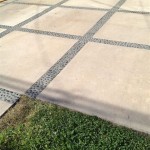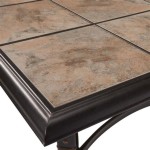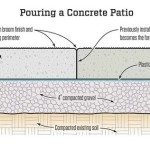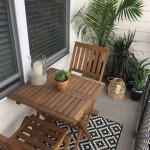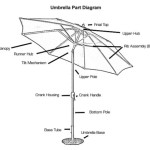What Size Rug for Patio: A Comprehensive Guide
Selecting the correct size rug for a patio space is crucial for enhancing its aesthetics and functionality. A rug that is too small can appear insignificant and disjointed, while a rug that is too large can overwhelm the area and potentially be susceptible to weather damage. Proper rug sizing ensures a cohesive and visually appealing outdoor living space, complementing the furniture arrangement and overall patio design.
Determining the ideal rug size involves considering several factors, including the dimensions of the patio, the placement of furniture, and the desired visual impact. The goal is to create a balanced and inviting environment that seamlessly integrates the rug with the surrounding elements. A well-chosen rug size can define a seating area, protect the patio surface, and add a touch of style and comfort to the outdoor space.
Key Point 1: Measuring Your Patio Space
The foundation of choosing the right rug size is accurate measurement of the patio area. This step should be conducted carefully to avoid purchasing a rug that is disproportionate to the available space. Utilizing a measuring tape and noting the length and width of the patio will provide the necessary data for informed decision-making. It is advisable to measure the entire patio surface even if the rug is intended for a specific area within the patio.
If the patio is an irregular shape, it may be helpful to divide it into smaller, more manageable rectangles or squares for measurement purposes. This approach simplifies the process and allows for a more accurate calculation of the total area. Sketching a rough diagram of the patio and noting the dimensions of each section can further aid in visualization and planning.
Considering the specific area where the rug will be placed is also essential. If the rug is intended to define a seating arrangement, measure the dimensions of the furniture grouping to determine the appropriate rug size. Ensuring that the rug extends beyond the furniture perimeter by a reasonable amount will help to anchor the space and create a unified look.
Beyond the immediate furniture area, take into account any pathways or access points that need to remain clear. Excessively large rugs that obstruct pathways can create tripping hazards and hinder the flow of traffic. Maintaining adequate space around the rug ensures ease of movement and enhances the functionality of the patio.
Finally, account for any permanent fixtures such as columns, built-in benches, or planters. These elements may influence the placement and size of the rug. Measuring the distance between these fixtures and the furniture area will help determine the maximum available space for the rug while avoiding obstructions.
Key Point 2: Furniture Arrangement and Rug Placement
The arrangement of furniture on the patio significantly influences the appropriate rug size. There are several common approaches to rug placement in relation to furniture, each creating a different visual effect. Understanding these options allows for a customized approach that best complements the patio design and personal preferences.
One common method is to place all the furniture legs on the rug. This approach creates a defined and cohesive seating area, making the space feel grounded and unified. For this strategy, the rug must be large enough to accommodate all the furniture pieces, including sofas, chairs, and coffee tables. This method is often used in larger patios where there is ample space to accommodate a substantial rug.
Another option is to place only the front legs of the furniture on the rug. This approach, sometimes referred to as "floating the furniture," creates a more casual and open feel. The rug defines the seating area without completely enclosing it. This method works well in smaller patios where a smaller rug is desired to avoid overwhelming the space. The size of the rug will need to still extend at least 12-18 inches beyond the front legs of all surrounding furniture to appear purposeful and not too small.
A third strategy involves using the rug primarily to define the space and placing the furniture entirely off the rug. This approach works well for accent rugs or rugs that are primarily intended to add color or texture to the patio. It is often used in conjunction with other design elements, such as potted plants or decorative accessories, to create a visually balanced and inviting space. The rug, in this case, acts more as a focal point or a decorative element.
When selecting a rug size based on furniture arrangement, it's important to consider the scale of the furniture itself. Larger furniture pieces will require a larger rug to maintain visual balance, while smaller, more delicate furniture can be complemented by a smaller rug. The goal is to create a harmonious relationship between the rug and the furniture, ensuring that neither element overwhelms the other.
Additionally, consider the shape of the furniture. A circular dining table may be best complemented by a round rug, while a rectangular sofa may be better suited to a rectangular or slightly oval rug. Experimenting with different shapes and sizes can help determine the most visually appealing arrangement for the patio space.
Key Point 3: Considering Patio Shape and Style
The shape and overall style of the patio play a crucial role in determining the appropriate rug size and shape. A long, narrow patio may benefit from a runner rug or a series of smaller rugs placed strategically to define different zones. A square patio may be best suited to a square or round rug, while a larger, irregularly shaped patio may require a custom-sized rug or a combination of rugs to effectively define the space.
The architectural style of the patio should also be taken into consideration. A modern, minimalist patio may benefit from a simple, geometric rug in a neutral color palette. A more traditional patio may be complemented by a rug with intricate patterns and richer colors. The rug should enhance the overall aesthetic of the patio and seamlessly integrate with the existing design elements.
The material of the patio surface can also influence the choice of rug size and material. If the patio is made of natural stone or brick, a rug can provide a soft, comfortable surface to walk on. If the patio is made of concrete or tile, a rug can add warmth and texture to the space. Selecting a rug material that is durable, weather-resistant, and easy to clean is essential for outdoor use.
In addition to the patio's shape and style, consider the surrounding landscape. If the patio is surrounded by lush greenery, a rug in a natural color palette can help to blend the space with the environment. If the patio is located in an area with limited vegetation, a rug with vibrant colors and patterns can add a pop of visual interest.
When selecting a rug shape, consider the shape of the furniture and the overall layout of the patio. Round rugs can soften the hard edges of furniture and create a more inviting atmosphere. Rectangular rugs can help to define a specific zone or pathway. Oval rugs can add a touch of elegance and sophistication to the space. Experimenting with different shapes can help determine the most visually appealing and functional option for the patio.
Ultimately, the ideal rug size and shape should complement the patio's overall design and enhance its functionality. By carefully considering the dimensions of the space, the furniture arrangement, and the patio's style, a rug can transform an outdoor area into a comfortable and inviting living space.
The choice between different rug sizes for patios is largely dependent on the user’s aesthetic preferences. Some may like the rug to fill the space and anchor all furniture, while others might prefer the visual appeal of smaller area rugs. There is no right or wrong answer here. The important factor is creating a pleasing visual that complements the rest of the patio.
While functionality is important, the look and feel of the patio is equally important. The rugs you choose should be durable against the elements but should also create an environment that you intend to make use of as often as possible. Consider this when buying rugs.

Your Guide To Outdoor Rug Sizes Authenteak

Your Guide To Outdoor Rug Sizes Authenteak

Shopping For An Outdoor Rug Your Deck Trex Furniture

How To Choose The Best Outdoor Rug For Your Deck Or Patio Jessica Welling Interiors

How To Choose An Outdoor Rug For Your Porch Or Patio Home

Choosing The Right Size Outdoor Rug Caron S Beach House

Nourison Palamos Pls04 Area Rug Grey 2 X 10 Runner

How To Choose The Best Outdoor Rug For Your Deck Or Patio Jessica Welling Interiors

Guidelines For Choosing The Right Outdoor Rug

Safavieh Courtyard Natural Terra 7 Ft X Square Border Indoor Outdoor Patio Area Rug Cy0727 3201 7sq The Home

